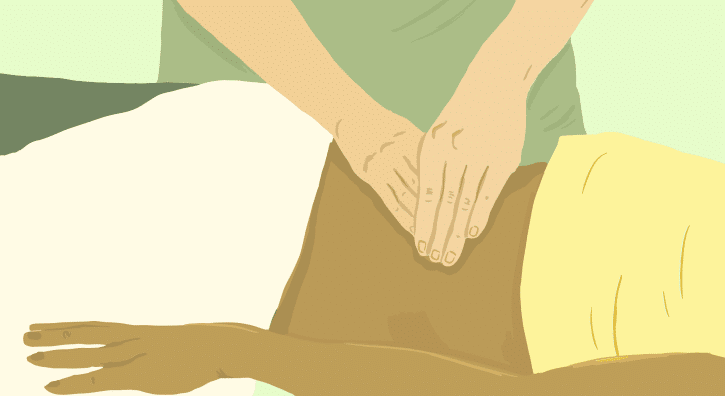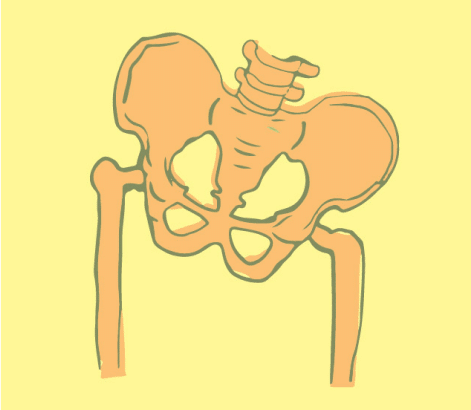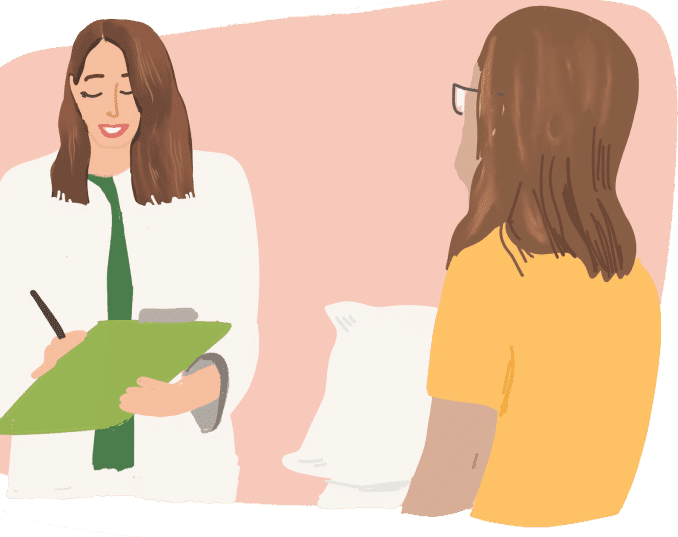

Symptoms
- Pain in the pelvic region can feel like a dull ache, burning, tingling, or soreness and can occur in the vulva, vaginal area, perineum, or anus
- Many women report pain during sexual contact, sensitivity to tight garments, and challenges with prolonged sitting
- Some exercises or activities can trigger or worsen symptoms
- Accompanying urinary issues can include frequent urges, painful urination, leakage, or needing to urinate often
- Gastrointestinal symptoms like irregular bowel movements, constipation, or bloating may occur
- The discomfort may be linked to tampon use or sex, or happen seemingly without warning
- Some women feel pain every day, while others go through flare-ups that come and go

Symptoms
- Pain in the pelvic region can feel like a dull ache, burning, tingling, or soreness and can occur in the vulva, vaginal area, perineum, or anus
- Many women report pain during sexual contact, sensitivity to tight garments, and challenges with prolonged sitting
- Some exercises or activities can trigger or worsen symptoms
- Accompanying urinary issues can include frequent urges, painful urination, leakage, or needing to urinate often
- Gastrointestinal symptoms like irregular bowel movements, constipation, or bloating may occur
- The discomfort may be linked to tampon use or sex, or happen seemingly without warning
- Some women feel pain every day, while others go through flare-ups that come and go

Associated Diagnoses
Diagnoses such as Endometriosis, Vulvodynia, Interstitial Cystitis/Painful Bladder Syndrome, Pudendal Neuralgia, Lichen Sclerosus, Lichen Planus, and Irritable Bowel Syndrome are associated with pelvic pain and pelvic floor dysfunction.


Causes of Pelvic Pain
- Chronic vaginal or bladder infections, and coexisting conditions affecting the reproductive, digestive, urinary, skin, or gynecological systems
- Most women suffering from pelvic pain have an associated pelvic floor dysfunction diagnosis
- Medications such as birth control pills, hormonal acne treatments, and hormone suppressors used in managing Endometriosis and PCOS
- Surgeries involving the reproductive organs or pelvic region, including complications from childbirth
- Past orthopedic injuries or physical trauma impacting posture and movement
- Biomechanical misalignments like piriformis syndrome, scoliosis, or hip and sacroiliac joint dysfunctions
- The physical demands and trauma of vaginal childbirth
- Hormonal changes during and after menopause
- Genital injury or non-medical genital cutting practices
Causes of Pelvic Pain
- Chronic vaginal or bladder infections, and coexisting conditions affecting the reproductive, digestive, urinary, skin, or gynecological systems
- Most women suffering from pelvic pain have an associated pelvic floor dysfunction diagnosis
- Medications such as birth control pills, hormonal acne treatments, and hormone suppressors used in managing Endometriosis and PCOS
- Surgeries involving the reproductive organs or pelvic region, including complications from childbirth
- Past orthopedic injuries or physical trauma impacting posture and movement
- Biomechanical misalignments like piriformis syndrome, scoliosis, or hip and sacroiliac joint dysfunctions
- The physical demands and trauma of vaginal childbirth
- Hormonal changes during and after menopause
- Genital injury or non-medical genital cutting practices

Diagnostic Challenges
Receiving a correct diagnosis for pelvic pain can be frustratingly slow—women often spend five years searching for answers, and in cases like Endometriosis, the journey can stretch to 11 years or more. A major reason for this delay is that the symptoms of pelvic pain are frequently mistaken for other medical issues such as yeast infections, bladder infections, STIs, and other urinary conditions. This overlap causes countless misdiagnoses and treatments that don’t address the true cause. When pelvic floor dysfunction is involved, it often eludes standard testing, leaving healthcare providers at a loss. Many women begin physical and occupational therapy unaware that the pelvic floor even exists, much less that it could be behind their persistent pain.
Diagnostic Challenges
Receiving a correct diagnosis for pelvic pain can be frustratingly slow—women often spend five years searching for answers, and in cases like Endometriosis, the journey can stretch to 11 years or more. A major reason for this delay is that the symptoms of pelvic pain are frequently mistaken for other medical issues such as yeast infections, bladder infections, STIs, and other urinary conditions. This overlap causes countless misdiagnoses and treatments that don’t address the true cause. When pelvic floor dysfunction is involved, it often eludes standard testing, leaving healthcare providers at a loss. Many women begin physical and occupational therapy unaware that the pelvic floor even exists, much less that it could be behind their persistent pain.
Treatment:
How We Can Help You

Women in Los Feliz who are struggling with ongoing pelvic pain can benefit greatly from an evaluation by a pelvic floor physical and occupational therapists. This comprehensive assessment takes a close look at your health journey so far—including any previous diagnoses, therapies you’ve tried, and how much relief they provided. Many of our patients from Los Feliz arrive feeling deeply frustrated, having dealt with years of discomfort and unanswered questions. During the physical evaluation, your therapist will assess everything from muscle and nerve function to joint mobility and body mechanics. After gathering this detailed information, your provider will walk you through what’s contributing to your symptoms and develop a custom treatment strategy, complete with targeted short- and long-term goals. Most women are seen weekly or twice a week for around 12 weeks, with supplemental exercises designed to enhance your recovery at home. We also partner with your other healthcare professionals to make sure your care is comprehensive and cohesive. You deserve to feel heard, supported, and hopeful again—and we’re here to help you achieve that.

Treatment:
How We Can Help You
Women in Los Feliz who are struggling with ongoing pelvic pain can benefit greatly from an evaluation by a pelvic floor physical and occupational therapists. This comprehensive assessment takes a close look at your health journey so far—including any previous diagnoses, therapies you’ve tried, and how much relief they provided. Many of our patients from Los Feliz arrive feeling deeply frustrated, having dealt with years of discomfort and unanswered questions. During the physical evaluation, your therapist will assess everything from muscle and nerve function to joint mobility and body mechanics. After gathering this detailed information, your provider will walk you through what’s contributing to your symptoms and develop a custom treatment strategy, complete with targeted short- and long-term goals. Most women are seen weekly or twice a week for around 12 weeks, with supplemental exercises designed to enhance your recovery at home. We also partner with your other healthcare professionals to make sure your care is comprehensive and cohesive. You deserve to feel heard, supported, and hopeful again—and we’re here to help you achieve that.
How Can We Help You?
To get in touch with us, kindly complete the form below with your questions or any comments you may have. Be sure to provide your email address so that we can respond personally. We take your privacy seriously, and all submitted information will be kept strictly confidential.

Join The Newsletter. Win a copy of our book, “Pelvic Pain Explained!”
We love getting to know our website visitors. Please tell us a little bit about yourself and get the latest info via PHRC e-newsletter!
*Subscribers automatically eligible to win our book, “Pelvic Pain Explained.”
Pelvic Pain Explained takes a deep dive into the root causes of pelvic pain, the many roadblocks encountered during the journey to diagnosis and proper care, the vast—and sometimes confusing—array of available treatments, and the emotional and relationship strain caused by living with a condition that often lacks visible symptoms.


